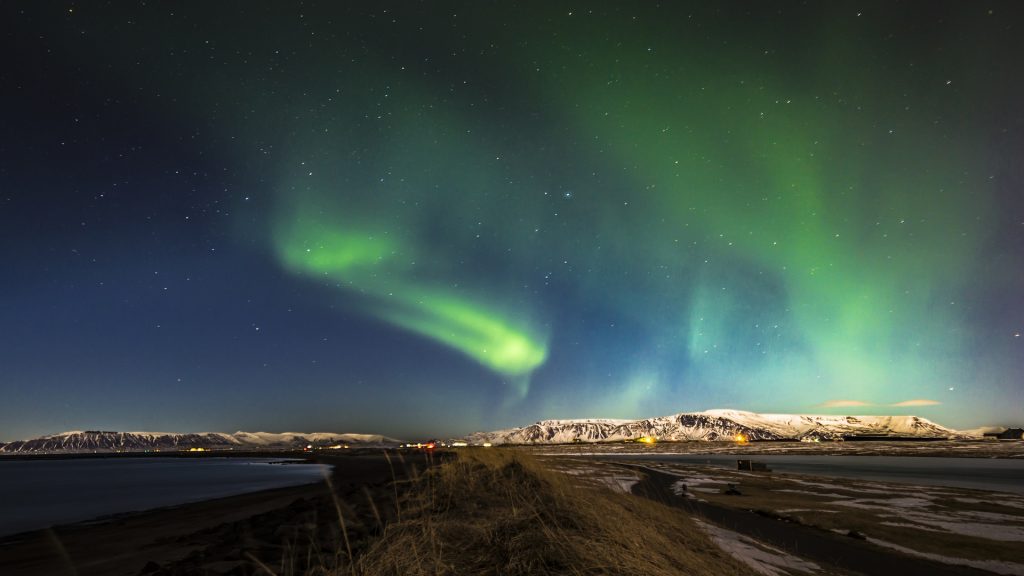What They Are
Also known as the Aurora borealis in the north, the Northern Lights are bright, dancing displays of light in the night sky. This enchanting display is actually caused by collisions between electrically charged particles from the sun that enter the earth’s atmosphere. They can appear in many colors. Although pale green and pink displays are the most common, shades of red, yellow, green, blue, and violet have been reported. The lights may appear in small patches or clouds, streaming arcs, rippling curtains, or shooting rays. Our beloved client, Meg Herman, was lucky enough to see them in February 2018. She said, of all the wonderful places they visited on their around the world trip, seeing the Northern Lights was a highlight of the trip.
Mystical Theories
As magnificent as they are, some people find them quite eerie. Before they were explained by science, there were several mythical theories. The old Norse, for example, thought they could be the shine from the amour of the Valkyries, the mythical female figures who chose who lived and died in battle and escorted the dead to the afterlife. Some Native American tribes believed they were spirits and reportedly, the brighter they shine, the happier the dead were. After Christianization in Medieval Europe, the lights were often seen as an omen of dark times ahead. However, Confederates at the Battle of Fredericksburg, believed them to be a positive omen. While they won that battle, the good omen obviously didn’t last long.
Where to See Them
Unfortunately, solar activity is not regular, so seeing the Northern Lights ultimately comes down to luck. However, there are certain ways to increase your chance of seeing them! Due to the nature of the earth’s magnetic field, the auroras only appear at the poles, above the 60° latitude mark in the north, and below the 60° latitude in the south. This makes Iceland a perfect location to view them from! You have the best chance of seeing the lights in the Westfjords and north Iceland, because these areas have longer dark hours. In the northernmost regions, during the winter equinox, you experience close to twenty-two hours of darkness! View our Iceland Nature Immersion Itinerary here.
When & How to See Them
The only time to see the Aurora in the north is in the winter, between September and April. When planning your trip, it is important to note the lunar cycle. You’ll want to have as little light as possible obstructing your view of the night sky, so avoiding a full-moon is essential. Cloud cover and solar activity can be researched a few days in advance, but unfortunately, cannot be depended on. Though not the most ideal way to view the lights, if you don’t want to leave the city Reykjavík makes for a decent viewing spot. It is a fairly spread out city with many parks, so light pollution is not a huge concern. Öskjuhlíð (especially the forest next to Perlan, a popular restaurant), Klambratún, and Laugardalur Park also make good options. You may choose to rent a car and drive yourself out to remote locations to see the lights, but icy road conditions, treacherous terrain, and general unfamiliarity with the region can pose significant issues. Our client, Meg Herman was lucky enough to see the lights while out at sea, far from any light pollution. Tours are available from the cities of Akureyri and Reykjavik. The best way to view the displays, however, is with a private guide. The benefits of these private tours are endless: you will be guided by experts, who know the terrain and are experienced with the icy roads and region. Added benefits include expert knowledge on the lights themselves, where to find them, and how to photograph them!
